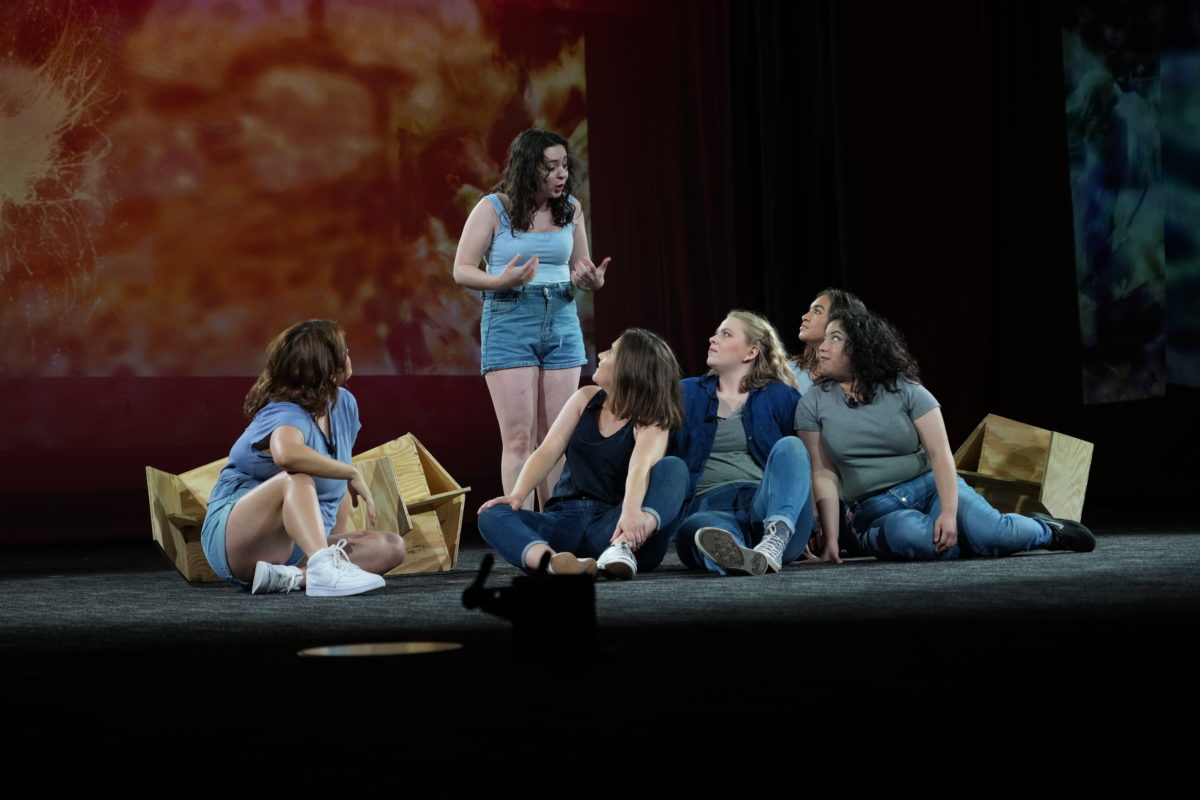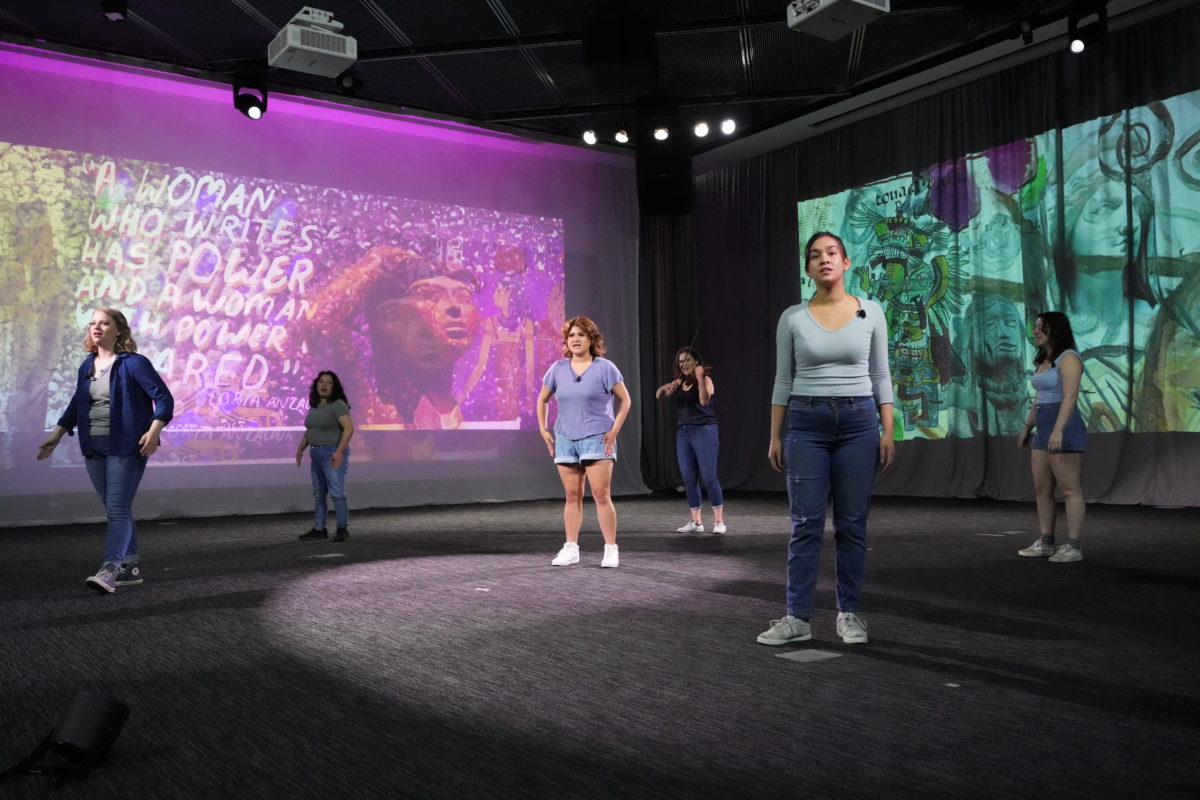A new course explores the impacts of race, sexuality, and gender on the systems of everyday life
For Danielle Wood, understanding identity–how experiences of race, gender, sexuality, and ability affect one’s experience of the world–is critical for designing better systems, whether it’s a musical theater show or a spaceship to Mars. These systems, far from being neutral, reflect the biases of society. How could the future be different?
Wood, an assistant professor in the Program in Media Arts & Sciences, leads the Space Enabled research group at the MIT Media Lab, while also holding an appointment in the Department of Aeronautics & Astronautics. Her research focuses on how to use the innovative technology developed for space exploration to improve life on earth, particularly in developing countries, and to promote a sustainable environment in space for generations to come.
The new course “Queer-Feminist-Antiracism and Design for the Future,” sponsored by both the MIT Media Lab and the MIT Center for Art, Science & Technology (CAST), is a collaboration between Wood and Austin Eyer, an Assistant Professor in Musical Theatre at the University of Texas at Arlington. Wood and Eyer first met as teenagers at an arts high school in Orlando, Florida. While Wood went on to work for NASA, Eyer performed on Broadway. The idea for the class was hatched during the Covid lockdowns, when they realized while chatting on the phone that some of the challenges faced in their fields were similar.
Just as musical theater needed to better reflect the realities of people of different backgrounds, so too did science and technology need to confront issues of injustice–from creating airports to serve people of different cultures to designing machinery for bodies of all types and sizes. “How do you create and design things in a way that addresses the needs of people, especially when it’s not a secret that some groups in society have gotten more discrimination,” says Wood.
The course, a recipient of a CAST Cross Disciplinary Class Grant and an award from the MIT School of Humanities, Arts and Social Sciences, brought together students from a range of disciplines: computer science, engineering, systems analysis, and earth science, in addition to theater and art, from both MIT and the University of Texas. Each student created their final project based on their specific area of expertise, but all the work, Wood says, was “connected by a grounding in considering identity, race, gender, and culture.” In the course, they discussed how capitalism, colonialism, racism, patriarchy, and heteronormative culture create interlocking systems of oppression, and how art could offer ways to work against these dominant structures.

Drawing from traditions of Black innovation
With a focus on Black feminism, students read and discussed the work of artists and thinkers like Audre Lorde, Zora Neale Hurston, and Carrie Mae Weems, which inspired a range of projects in diverse media. Each week was organized by different “liberatory prototypes” from poetry to theater to dance. Visiting artists also shared how their work reflected important social issues. “All the things that were created, whether it was done in video, performance, or making furniture, all of them return to the same conversation,” says Wood.
In collaboration with choreographer and dancer Jennifer Harrison Newman and projectionist Paul Lieber, the class culminated in a series of “choreopoems” combining spoken word, movement, light, and sound. It is a form that, while based in the written word, allows for different kinds of creative adaptation.
Performed by students and instructors from both MIT and University of Texas-Arlington, the work was inspired by choreopoems like Ntozake Shange’s “for colored girls who have considered suicide / when the rainbow is not enuf” and Langston Hughes’s “Black Clowns,” which, as Wood says, are part of the greater tradition of Black cultural innovation that gave the United States art forms like blues and jazz. “You can perform it with music, you can sing it, you can move it, you can do whatever you need to do to make it live,” says Wood. “We were all just expressing things that were important to us within this literature and in our lives.”

The responsibility of design
Through the class, Wood wants to emphasize the importance of artistic practice, particularly in an institution so well-known for its science and engineering programs. Just like these fields, Wood says, art is an important way of understanding and interpreting the world around us. “Every field has its own forms of rigor, and its own detailed practices that require a lot of practice and patience and repetition,” she explains. Not only does art allow us to question what it means to be human, she says, but it also helps us think differently about things–an important skill for any scientist or engineer to have.
The class is part of Wood’s teaching within the new African and African Diaspora Studies major at MIT. As the faculty advisor for this major, Wood teaches several classes that students can take to receive credit toward a degree in this field. In addition to “Queer-Feminist-Antiracism and Design for the Future,” Wood also co-teaches the introductory class to the major called “Black Matters: Introduction to Black Studies” with Michel deGraff, a Professor of Linguistics, and Fox Harrell, Professor of Digital Media and Artificial Intelligence in the Comparative Media Studies Program and Computer Science and Artificial Intelligence Laboratory (CSAIL). In the future, Wood hopes more students will take the course, which is open to all students, regardless of their area of concentration.
“Everyone at MIT designs. It doesn’t matter what your department is called, design is happening across MIT,” says Wood. From engineering, science, architecture and planning to business, designing the future is part of the work of MIT. “We’re all creating something that didn’t necessarily exist before. And because of that we all have the responsibility to design conscious to historical injustice. Everyone has that job, whether they know it or not, and it’s my hope they can come to the class and get trained so when they become leaders in their next jobs, they are ready to make a difference.”
Article by Anya Ventura, Arts at MIT
Editorial Direction by Leah Talatinian, Arts at MIT

